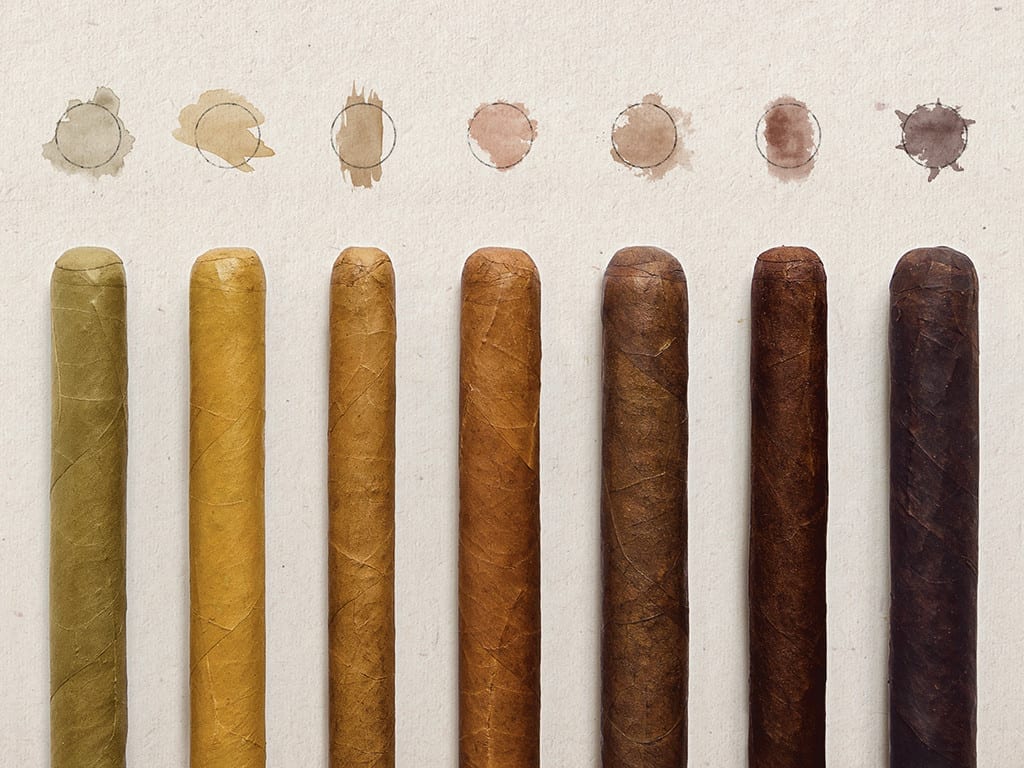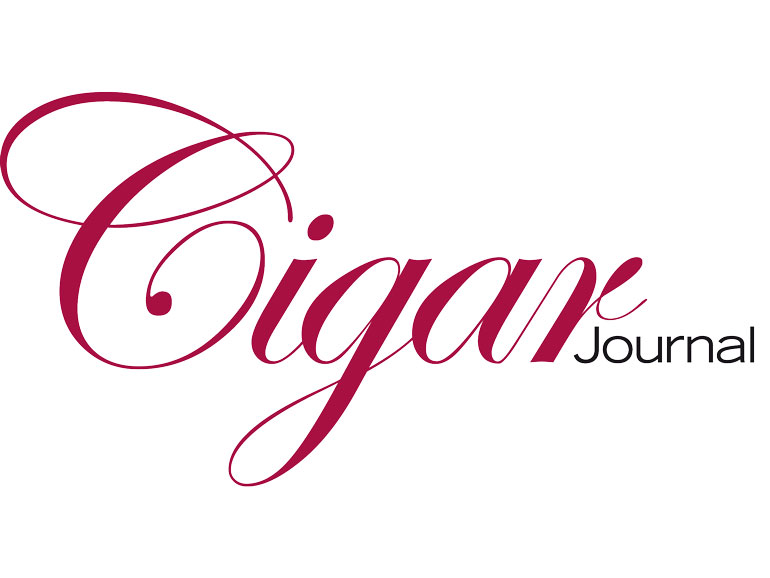Cigars not only come in different forms. As well, the color spectrum of the wrapper is impressively extensive, and each one is the result of several different factors and processes that also influence how a cigar tastes. In this Cigar Trivia we’re going to give you an overview of the most common colorings, and some insight into how they originate.
Natural, Rosado, English Market Selection (EMS), Sun-grown and Connecticut are the wrappers of a cigar with which many cigar lovers are familiar. Cigar manufacturers themselves differentiate between dozens of nuances in wrappers. Generally, however, they are distinguished by seven categories.
With many transitions, these extend gradually from the lightest to the darkest color: Candela or Double Claro, a wrapper which is now rare, has a matt green coloring; Claro, a wrapper with yellowish/light-brown coloring; Colorado Claro, a light-brown leaf; Colorado or Rosado, a touch darker than a Colorado Claro, usually with a reddish tinge; Colorado Maduro, a middle-brown color; Maduro, an intense dark brown, and Oscuro or Double Maduro, a dark brown tending towards black. Many of the common names for wrappers come from the way they are grown, how they are harvested, or the country of origin.
This is due to the fact that many of these listed factors are characteristic for individual wrapper colors. So, in the case of a Broadleaf wrapper, one assumes that one is dealing with a Maduro cigar. But why is this so?
The most important influential factor for the final color of a wrapper is its fermentation, a process in which the previously dried leaves undergo microbiological processes under controlled conditions. Aside from leading to changes in taste, this also changes the color of the tobacco leaves. Decisive for the final color are the duration and temperature of the fermentation process and thus indirectly also the characteristics of the tobacco leaf itself.
In this way, the period of the fermentation of wrappers that are shade-grown, or those grown under natural cloud cover such as in Ecuador, are definitively shorter because these plants have less essential oils and thinner leaves. This results in wrappers that have a lighter color (e.g. Claro). Sun-grown tobacco, especially with leaves taken from the top half of the plant, or Broadleaf, on the other hand, have a longer fermentation period due to their stronger leaves and higher concentration of essential oils. The fermentation can last from a few weeks to up to one year, and consequently leads to an increasingly darker coloring of the tobacco leaves.
It’s not only fermentation, sunlight and the positioning of the leaves on the plant that influence the color of the valuable leaves. The type of tobacco also plays a role. The leaves of some types are innately darker than others; harvesting the tobacco earlier and the quick drying of the fresh leaves result in a lighter leaf color.
Special cases, not only when it comes to color, are Double Claro or Candela wrappers, which in the meantime only occupy a subordinate role in the cigar branch. But this has not always been the case. The extraordinary popularity of the green leaves in the Sixties and Seventies in the USA gave the wrappers the name American Market Selection (AMS), which is still partly used today. While the color of other wrappers is largely a result of the drying and fermentation process of the tobacco, the Candelas get their special color from a work-intensive and highly accelerated drying process of the tobacco leaves.
The temperature in the drying barns is gradually increased in such a way that, within about three days, the moisture has completely escaped from the freshly harvested tobacco. The chlorophyll is thereby enclosed in the cells and doesn’t decompose as it does during the slower drying process. This creates the characteristic color of a Candela wrapper and results in tobacco leaves of medium strength with little aroma.
Maduro wrappers are a result of a long and comparatively hot fermentation. The tobacco leaves that are used to make Maduros are usually thicker and can be subjected to a longer period of fermentation at higher temperatures. For the characteristic brown-black color and oily glittering surface of an Oscuro or Double Maduro, a patient and controlled fermentation, which can last up to one year, at high humidity and moderate heat is required.
This article was published in the Cigar Journal Autumn Edition 2015. Read more














Pingback: Of Cigar Tasting - The Raw Cigar - Cigar Sense
Pingback: About the Role Nicotine Plays in the Enjoyment of Cigars | Cigar Journal
Pingback: Cigar News you can use: Cigar Journal Article – Urban Fishing Pole Cigars